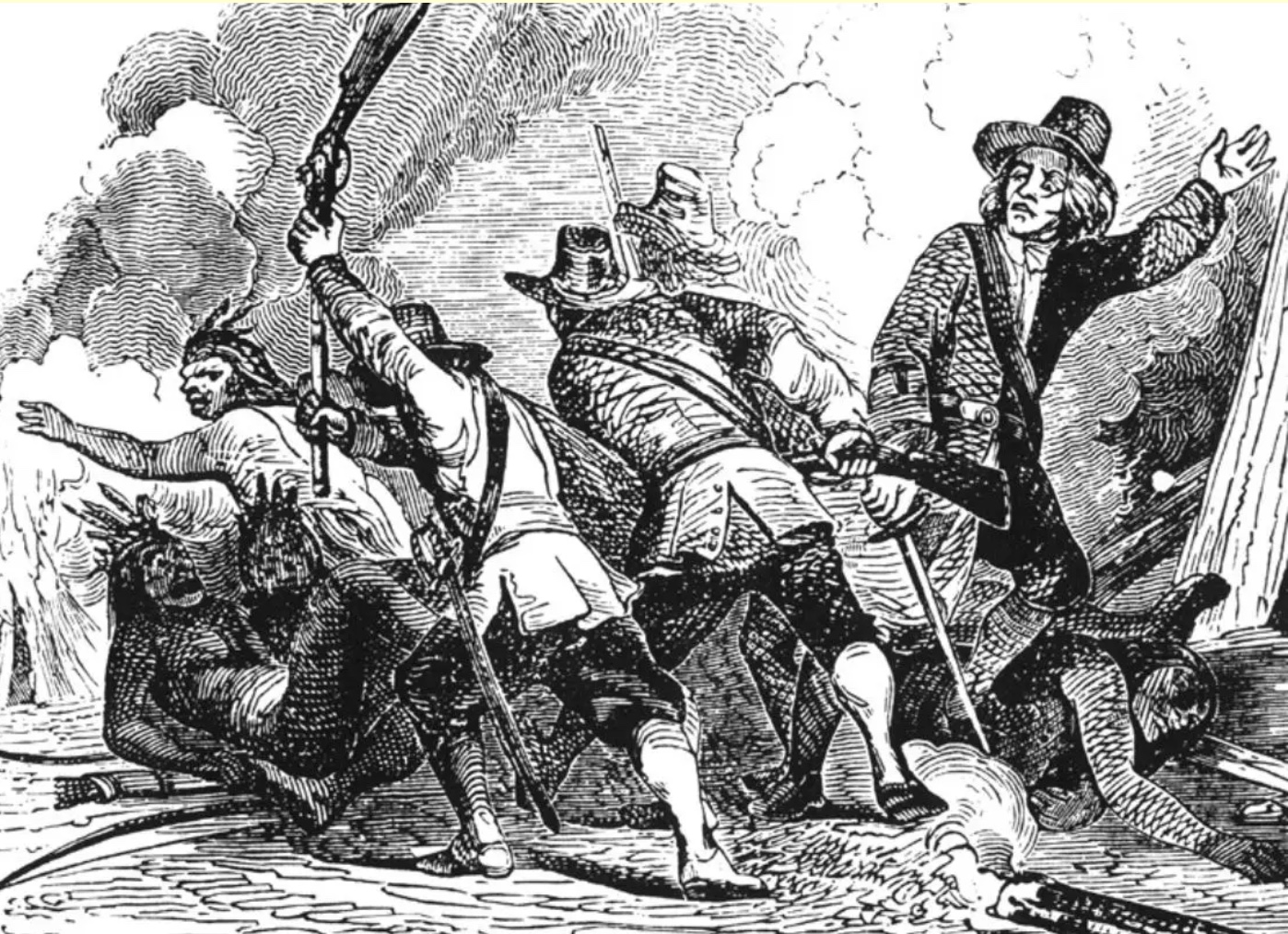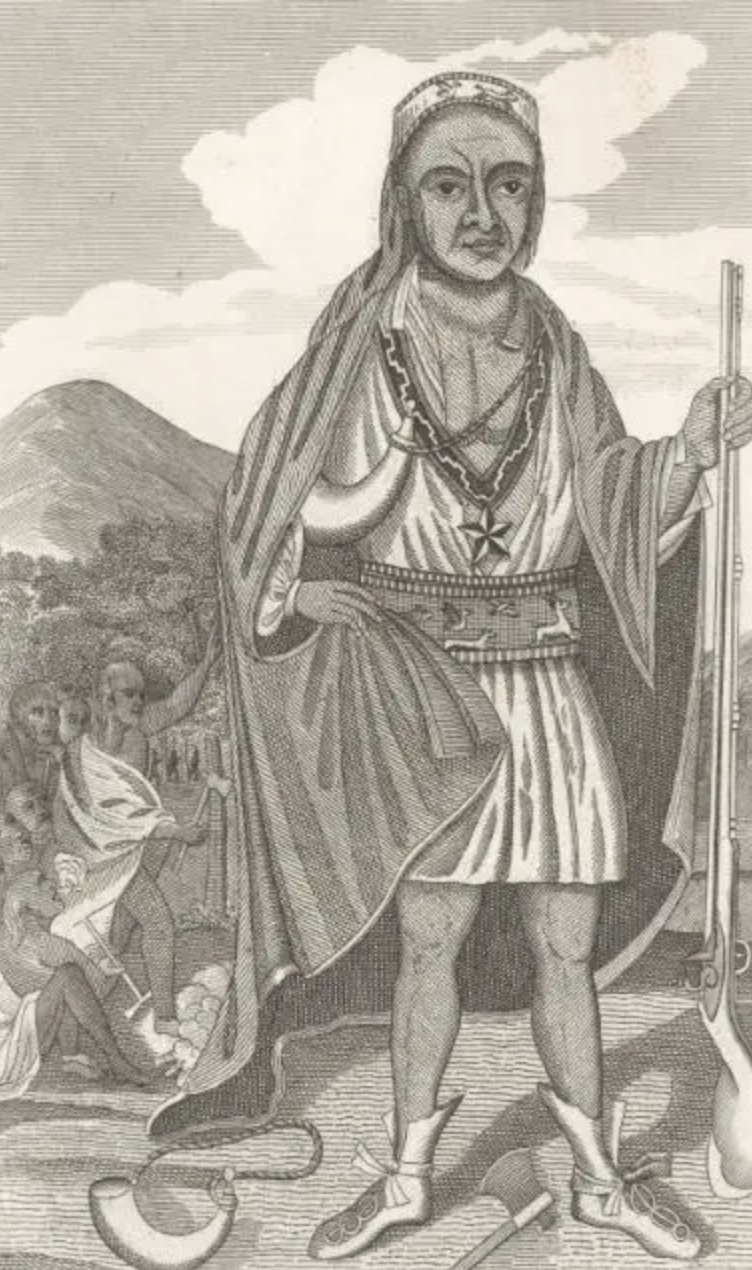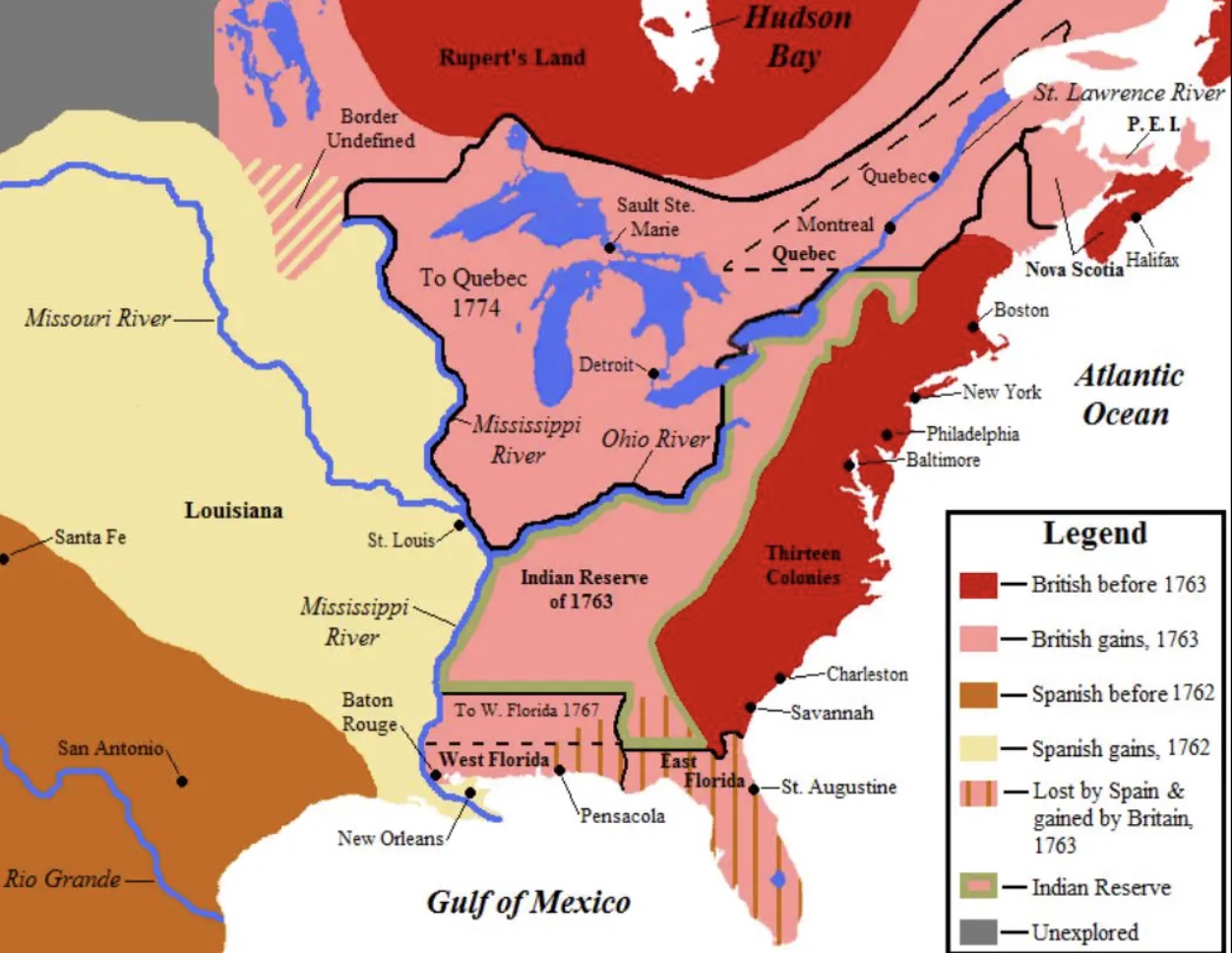Timeline of American Colonial Indian Wars
This list of American Colonial Wars is in chronological order from the earliest English/Indian conflicts to the last major war prior to the Revolution. Interwoven among the wars between Natives and English (and the Dutch as well) is a series of conflicts among the European nations that also involved Indian tribes as allies of the various Europeans. In the long series of Anglo-French wars in North America, for instance, the Abenaki in northern New England (mostly in Maine) allied with the French against the British, while the Iroquois Confederacy in the Great Lakes region allied with the British against the French.
Though not mentioned in detail here, keep in mind also that many of the conflicts, especially in the more southern colonies, also involved enslaved Africans who were held as property by English American colonists. In many cases, escaped slaves would join with the Indians.
In addition to the wars in this timeline of Colonial Indian wars, there were also conflicts and rebellions among the English American colonists, and also multiple slave rebellions. Colonial America was a very violent place, and the threat of armed violence was a regular feature of life for white settlers, Native peoples, and Black slaves.
NOTE: In describing the indigenous peoples of America, we use the modern term Native American and the more historically familiar term Indian interchangeably. Also, in reference to Africans and African-Americans held in captivity as property in the American colonies, we use the terms enslave people, slaves, and captive Blacks interchangeably. While not all Europeans who settled in the American Colonies were from England, (other “British” peoples included Scots, Welsh, and Scots-Irish) and there were also immigrants from other European nations, the Whites of the colonies were under the authority of the English/British Crown, and thus are referred to by the general terms of “English” and “British.”
Here is the timeline of Colonial American Indian Wars
Roanoke Conflict (1586)-The first English colony in North America was the Roanoke Colony on the coast of what is now North Carolina. The local Native tribe, the Secotan, first tried to enlist English aid in their ongoing conflict with a neighboring tribe, called the Neiosioke. The English declined this aggressive alliance, but did establish initial good relations with the Secotans. Later, tensions rose between the English and Secotans, in part due to the deadly diseases the Europeans introduced to the local Indian population. In May and June of 1586, conflict broke out, with the English forcing the Secotans to flee and beheading the Secotan leader. The inhabitants of the Roanoke colony later disappeared (between when an English ship left them and when another supply ship arrived). It is unknown if they were killed (by either Indians or Spanish) or left of their own accord. This is called the Lost Colony. The next English attempt at planting a colony at Jamestown in what is now Virginia was more successful.
Jamestown Battles with the Paspahegh (May-June, 1607)- 400 Paspahegh, Quiockahannock, Weyanoke, Appomattoc and Chiskiack attack Jamestown. 3 Indians and 1 colonist are killed in the attack. Raids on Jamestown continue for several weeks until Chief Powhatan arranges a truce on June 15. The local Native tribes were concerned with the encroachment of the English.
Jamestown Battles with the Paspahegh (1608-1610)-Sporadic warfare between the Paspahegh and the English at Jamestown continue.
First Anglo-Powhatan War (1610-1614)- Full-blown war between settlers of the Virginia Colony and Algonquin Indians of the Powhatan Confederacy. The fighting was ended by the Peace of Pocahontas (who married an Englishman as part of the peace agreement).
Second Anglo-Powhatan War (1622-1632)- War between settlers of the Virginia Colony and Algonquin Indians of the Powhatan Confederacy.
Pequot War (1636-37)-The first war between the English and a Native tribe in the New England region. The Pequots battled the English colonies of Massachusetts Bay, Plymouth, and Connecticut, who were supported by the Mohegans and the Narragansett tribes. The Pequots were defeated and ceased to exist as a separate tribe.
First Beaver War (1641 – 1667) in the Great Lakes region-France battled the Iroquois Confederacy. Includes fighting in land that eventually became part of the United States.
Kieft’s War (1643–45) The Dutch of New Netherland (New Jersey and New York) and the Lenape tribe. The war is named for the Dutch governor.
Susquehannock War (1642-1644)–The colony of Maryland vs. the Susquehannock Tribe (which was given arms and assistance by the settlers of New Sweden, which was located in the area where modern Delaware, Pennsylvania, and New Jersey meet). The Susquehannock and Swedes won this war. After a peace treaty between Maryland and the Susquehannock in 1652, the two sided became allies against French and Iroquois encroachment.
Third Anglo-Powhatan War (1644-1646)- War between settlers of the Virginia Colony and Algonquin Indians of the Powhatan Confederacy.
Peach Tree War (1655) – Major attack by the Susquehannocks and allied tribes on several New Netherland settlements along the Hudson River. This attack began on September 15, 1655, and was a response to the Dutch conquest of New Sweden which had been a close ally of the Susquehannocks. While the bulk of the Dutch forces were still in New Sweden, the Susquehannocks attacked New Amsterdam (lower Manhattan) and Pavonia (modern-day Hoboken and Jersey City).
First Esopus War (1659-1660)- War between the Esopus Tribe and the Dutch.
Second Esopus War (1663)- War between the Esopus Tribe and the Dutch.
Doeg War (1675-1676)- Warfare between the Doeg tribe and Virginia Settlers. This conflict contributed to Bacons’ Rebellion.
Susquehannock War (1675-1676)–The colony of Maryland vs. the Susquehannock Tribe
King Phillip’s War (1675–1678)-Also called Metacom’s War. Major war in Massachusetts between the Wampanoag tribe and allied tribes against the Massachusetts colony and tribes allied with the English.
King Philip (Metacom), 19th-century engraving by Benson John Lossing.First Abenaki War (1675-1677)-Considered a part of King Phillip’s War, the English fought the Abenaki in what is now Maine.
Second Beaver War (1683 – 1701) in the Great Lakes region between the French and the Iroquois.
King William’s War (1689-1697)-Known in Europe as the War of the League of Augsburg AND as the War of the Grand Alliance and in North America as King William’s War. In North America, the Iroquois Confederation allied with the British, and the Abnaki fought on the French side.
Queen Anne’s War (1702-1712)-Known in Europe as the War of the Spanish Succession, in North America as Queen Anne’s War and in India as the First Carnatic War. This conflict also included the Second Abnaki War. The Abnaki Indian tribe allied itself with the French against the English colonists in North America.
Second Abenaki War (1702-1712)-Considered a part of Queen Anne’s War, the English fought the Abenaki in what is now Maine.
The Tuscarora War (1711-1715) -Was fought in North Carolina between English colonials and the Tuscarora Tribe and their allies, including the Yamasee.
The Yamassee War (1715–1717) War fought in South Carolina between British settlers and the Yamasee and a number of other allied Native American peoples.
Dummer’s War (1722–1725) also known as Father Rale’s War. Is also considered the 3rd Abnaki War. Fought in New England and Acadia/Nova Scotia.
French and Indian War (1754–1763) The culminating battle between the British and French for control of eastern North America. Both sides had Native American allies. The Iroquois on the British side, and the French were allied with the Abenaki, Micmac, Shawnee, Lenape, and Algonquin, among others. The French lost, and were expelled from Canada and the region between the Appalachian Mountains and the Mississippi. This is perhaps the biggest and most important of the many American Colonial Indian Wars.
Map of North American After the French and Indian War (1763)
Pontiac’s War (1763–1766)-As a direct result of the British victory in the French and Indian War, British troops occupied formerly French forts in the Ohio and Michigan country, which antagonized an alliance of Indian tribes, primarily from the Great Lakes region, the Illinois Country, and Ohio Country. Warriors from numerous tribes joined the uprising in an effort to drive British soldiers and settlers out of the region. The war is named after Ottawa leader Pontiac, the most prominent of many Indian leaders in the conflict. Even though the Native tribes were defeated in the war, the British decided to avoid further conflict by keeping White settlers out of the region. Thus, the British government issued the Royal Proclamation of 1763, which closed off the land west of the Appalachian Mountains from settlement. This was one of the grievances that caused the American colonists to eventually rebel against the British government in 1775.
Paxton Boys Attack/Conestoga Massacre (Dec. 1763)–Drunken Pennsylvania whites massacre a group of Susquehannock Indians. This was in response to Pontiac’s War.
Lord Dunmore’s War (1773)-War between the Commonwealth of Virginia (led by Governor Lord Dunmore) and the Mingo and Shawnee Indians. The Virginians defeated the Indians, but the Shawnee would resume fighting in 1775 when they attacked Daniel Boone in Kentucky. With the outbreak of the Revolutionary War, the Shawnee then joined with the Cherokee to battle the Colonists again.
The American Revolutionary War broke out in 1775, pitting a faction of American colonists against the British government and the Loyalist faction of American colonists. Various Indian tribes aligned themselves with either side, thus making this war into an “Indian War” as well.
Sources for American Colonial Indian Wars:
Wikipedia-various articles on Native American wars and Colonial Wars
The Dictionary of Wars-by George Kohn
Red, White, and Black -by Gary Nash
“The Dutch Connection: New Netherland, the Pequots, and the Puritans in Southern New England, 1620—1638.” by Mark Meuwese, in Early American Studies, vol. 9, no. 2, 2011, pp. 295–323. JSTOR, www.jstor.org/stable/23547650. Accessed 11 July 2020.
Copyright © 1998-2023 History Guy Media; Last Modified 11.21.23
“The History Guy” is a Registered Trademark.



